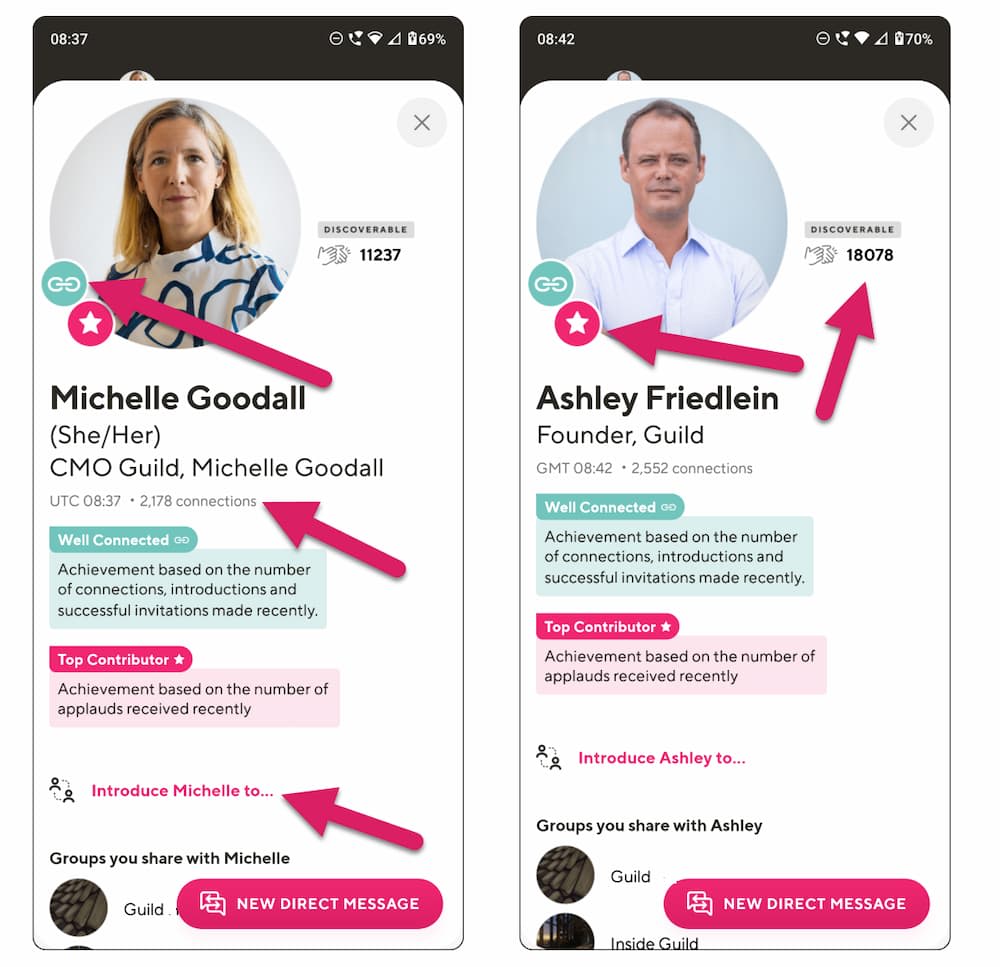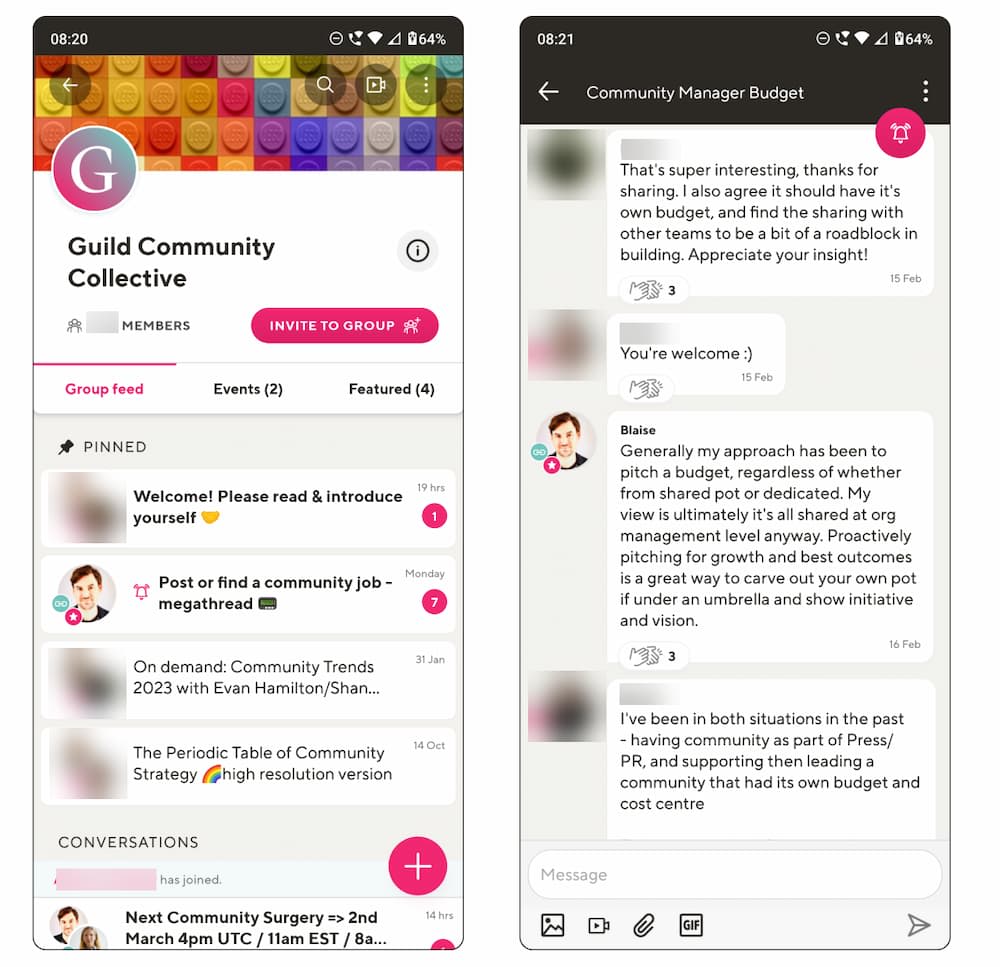Some communities have an element of gamification. But what is it and should you consider it for your community?
What is Gamification?
Gamification is quite simply the application of game-design elements and game principles in a non-game context.
It's aligned to behavioural science and psychology. The principles of gamification have been long used in training/education and healthcare to encourage people to participate, complete and enjoy programs, activities or tasks.
For example, students who gain classroom points or rewards in their school classes from teachers for academic or behavioural achievements.
What is Gamification in a community?
In communities, features like badges, points, challenges and leaderboards can reward members who engage and interact more in the community.
Sounds great?
Every community manager wants to see their members making valuable contributions. Regular, quality conversations make your community a great place to visit and stick around in. Automatically rewarding desirable behaviour seems like an obvious way to encourage it.
Or is it?
In our webinar on Community Trends for 2023, our expert panellists were asked questions about whether gamification is the right strategy in community building.
Are we increasingly immune to Gamification?
Evan Hamilton, Director of Comunity at HubSpot, warned that a lot of gamification choices can be lazy:
“It's “you posted something. Congratulations!” And you think “well, I know I posted something. It's not really an accomplishment.” I don't feel special, and then I get another notification: “You got your first Like!”. Yeah, okay, I got a Like. Awesome...”
Evan also pointed out that Michael Wu’s initial studies around gamification were over 15 years ago, long before the 'app explosion'.
These days almost every consumer app has badges, skins and ribbons. There's no real novelty factor today in gamification.
Evan reflected further:
“Now, you see gamification everywhere, on Duolingo…in every single thing you do. And so I think we've become a little more immune to it. And it really matters when it's something that we feel proud of.”
Community gamification shouldn't equal automation
But is all gamification bad?
As with so many aspects of building a community, people are mostly moved by the human touch.
Evan talked about Justin Isaf Man, formerly Director of Community for The Huffington Post. Among a range of automated community badges, Isaf Man said the one most readers cared about was the "Pundit" badge. Evan explains:
“Because the Pundit badge was given to you by a staff member. And so you knew: 'Oh, I did something so good that a human was like: This is great!'"
Guild Community Collective host and community expert Blaise Grimes-Viort says:
"Quality [of contribution] is finely tied to what behaviour the gamification model is designed to encourage. It takes a lot of thought to tease out all outcomes before launch to make sure you're not pushing people to negative behaviours."
Easy solutions like automated gamification may be tempting. But most people come to your community for its purpose and the other people in it.
Most members want to know when they’ve had a positive impact on a real human being, and however many bits of data your system can crunch, it can’t beat the knowledge that another person, whether that's the Community Manager/Host or other members has seen and appreciates what you have to say.
As Evan Hamilton said in our webinar: “People don't really need more badges in their lives. They've got lots of badges."
"I suspect you writing a personalized note and sending it: “Hey, your contributions this first month in the community have been amazing. Thank you so much” - will have a much bigger impact than a thousand badges.”
What are the risks of gamifying your community?
Research by Alexander Staub, Christopher Ulrich Lettl and Tom Grad in 2022 identified “a negative effect of award introduction on contribution quantity and an insignificant effect on contribution quality on average.”
Gamification can come with a number of risks. Here are a few:
- Skewing member focus towards seeking rewards rather than reciprocity
- Skewing member focus towards individual effort and reward vs collective effort and reward
- Discouraging a long-term commitment to the community, i.e. once you’ve earned the badge, why keep going?
- Short-termism vs long-termism - gamified awards will appeal to 'extrinsic motivations' rather than 'intrinsic motivations'. This can work well for short-term communities, but is not a recipe for long-term community success
[Further Reading: The Ultimate Online Community Glossary] - Leaving 'unsuccessful' members feeling left out if their contributions don’t get the same automatic recognition
- 'Cheapening' the community’s real purpose and value - many communities exist to build productive relationships that achieve something great through collaboration, e.g. Communities of Practice, Communities of Purpose, Communities of Circumstance - there's a risk that gamified rewards can feel inappropriate or 'tacky' in these spaces

Guild communities and the human touch
At Guild, we've kept gamification features to a minimum: an Applause counter, our Top Contributor Badge and Well-Connected Badge.
All are awarded only if your fellow community members value your contributions, continue to value them and connect with you.
Guild CEO Gregor Young explains:
"We thought long and hard about what badges would encourage the kinds of behaviours we'd like to see more of on Guild: more people getting involved in conversations, posting valued content as well as connecting with each other."
And on Guild, the only 'mechanized' reaction you can collect on your posts is applause from your fellow community, group or network peers/members.
You can use emojis and GIFs to add to your responses, but the emoji reactions you see on social media platforms LinkedIn and Facebook are absent.
CMO Michelle Goodall explains why:
"Guild communities are all about people, not algorithms and addiction.
LinkedIn and Facebook use strengths of reactions to content and posts as sliding scale signals of interest to capture behavioural data from users.
The stronger the emoji reaction you give, i.e Angry, Love, Funny, the more likely that you'll see much more of the same type of content in your feed.
In non-algorithmic communities like Guild, if you appreciate a comment, if you learned something, if another member made you laugh, cry or think differently then do show your appreciation in a more fulsome way. Build, debate, discuss things further, especially if you have an alternative viewpoint, don't just click a button in anger or joy."
The pros and cons of community gamification
Gamification can be fun for your members, it can boost engagement and activity. It can guide people to behave in ways you want to encourage in your community.
But it can also discourage those behaviours, relegate powerful intrinsic motivators, reduce long-term community engagement and growth, and create a winner-loser mentality, which doesn't help us to build inclusive communities.
Where do you strike a balance in your community?
Watch the Trends 2023 webinar and Evan Hamilton's views on Gamification. Share your thoughts on gamification and other community-building strategies, or ask for advice by joining Guild Community Collective [free community] with >1,000 global community professionals.


Header image by Mat Brown on Pexels
Join Guild 🤝
See for yourself how the Guild experience is different to WhatsApp, Slack, LinkedIn or Facebook Groups.
Guild is a safe space to connect, communicate and collaborate with others.
Join us on a platform that is purpose-built for creating groups, communities and networks on mobile.
- Just want to join some groups? Simply join Guild and then look through the discoverable groups and communities to find relevant ones to join
- Thinking of running your own community? With an elegant and simple to use, mobile-first UX you’ve got everything you need to start a community - custom branding, analytics, group and user management and support. Get started with your own community here with our free and paid options
Contact us if you want to know more or have any questions.